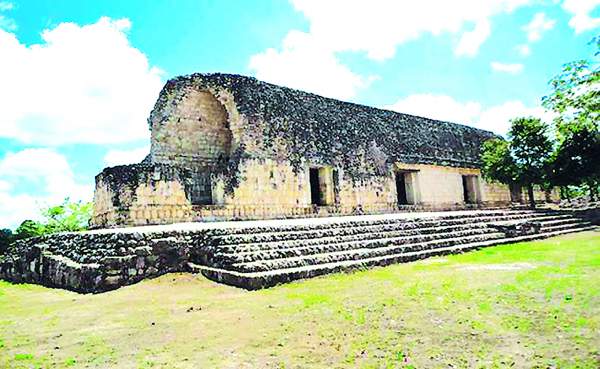They want to invest in ruins’ restoration so site can become a major tourist attraction….
THE GOVERNMENT of Yucatán and the National Institute of Anthropology and History (INAH) will soon begin projects to save the archeological site of Kulubá, which, according to the local Minister of Tourist Promotion, Saúl Ancona, will become a tourist hotspot.
“The site, which will have a broad tourist scope, will open partially this year to the public. We only need the project to be approved by the Governor, Rolando Zapata Bello, and the INAH, to give the media more information,” explained Ancona.
According to the researcher Alfredo Barrera, Kulubá has Mayan and Toltec influences, and its architecture is quite similar to that of Chichén Itzá and Ek Balam. Although this archeological site was discovered in December 1939 by researcher Wyllys Andrews IV, it wasn’t until 1941 that the first report of the remains of the city and a diagram were submitted.
It is believed Kulubá had an important trade relationship with Chichén Itzá, given its location on the shoreline of the Yucatán Penninsula. According to Ancona, they want to invest in Kulubá’s restoration so it can become a tourist attraction, similar to the case of Ek Balam, 18 years ago.
“It was a vital attraction as it boosted the economy of the region after travel agencies made it part of their itinerary,” said Ancona. “We expect the same thing to happen with Kulubá.”
Despite not providing an actual number, Ancona mentioned millions of pesos will be destined for this purpose as reforestation works and a brand-new 37-kilometer highway will be necessary so visitors can enjoy the splendor of Kulubá.
Based on data by the INAH, Ancona said tourism in Yucatán has certainly grown. In 2012 there were 2,279,696 visitors but by 2017 that number had increased to 3,517,959.
“Tourism grew by 54.37% in Yucatán,” Ancona detailed, claiming that with the grand opening of Kulubá, “these numbers will double.”
According to researchers such as William Brito, the name “Kulubá” comes from the Mayan word “K’ulu’” which refers to a wild animal, similar to a dog, that is used as a source of food by some remote communities in the region.
By El Universal










